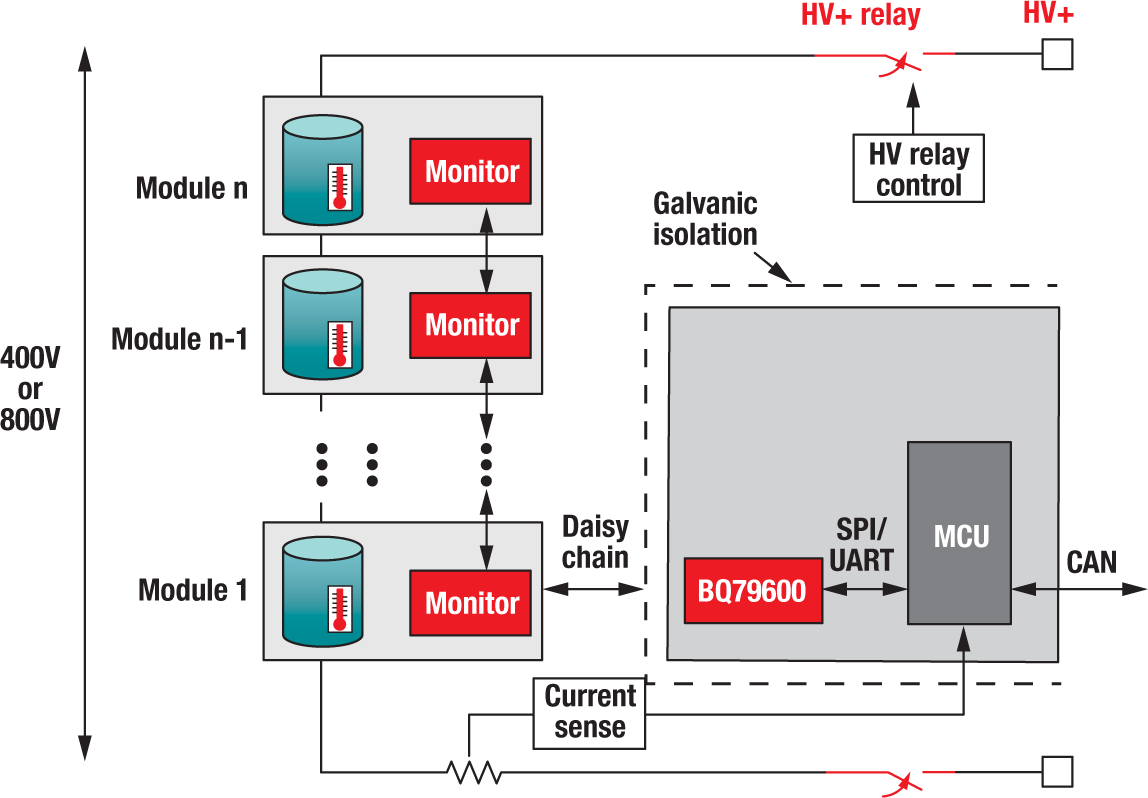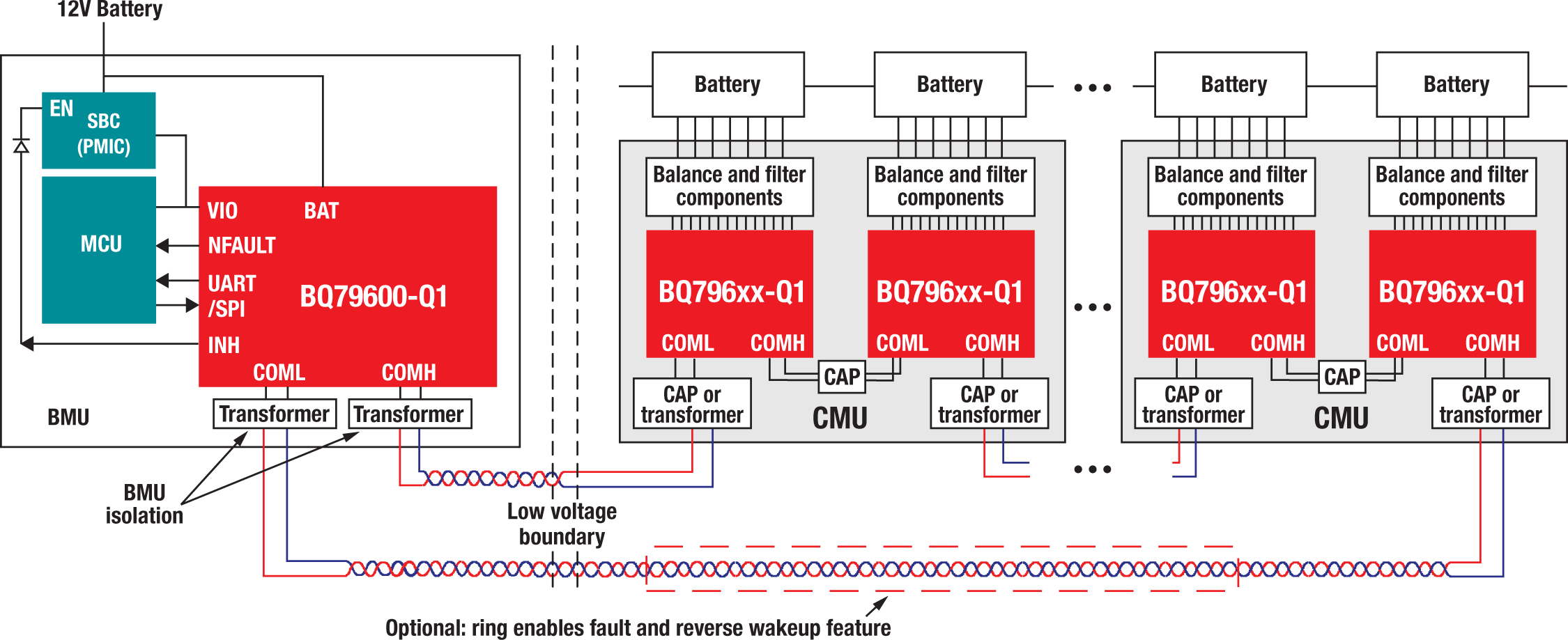SLYY197A october 2020 – october 2020 BQ79600-Q1 , BQ79606A-Q1 , BQ79616-Q1 , CC2642R-Q1
Distributed battery management systems in EVs
In electrified automotive applications, internal battery packs can extend up to 800 V and beyond to support the demanding loads of the AC motor. This translates into potentially 100 or more lithium-ion cells stacked together in series inside the vehicle chassis. These high-voltage packs are increasingly requiring more sophisticated technologies to report cell diagnostics in a safe, timely and reliable manner. One common design technique is to implement a distributed battery pack system, which supports high-cell-count packs by connecting multiple high-accuracy battery monitors on separate printed circuit boards (PCBs).
In a wired BMS solution, connecting these monitors in a daisy chain with twisted-pair cabling enables the propagation of data acquired for each module of battery cells. The difference between a wired and wireless BMS solution is that the latter uses a wireless communications interface rather than daisy-chain cabling. Figure 1 displays a typical distributed battery pack system for 400-V to 800-V EVs.
 Figure 1 Distributed BMS
Example.
Figure 1 Distributed BMS
Example. Figure 2 Wired BMS Example.
Figure 2 Wired BMS Example.In Figure 1, there is a subsystem containing the host MCU, which interfaces with the control unit of the vehicle through a Controller Area Network bus. Then the MCU processor drives the battery monitor devices connected out to the battery modules to sense voltage and temperature. Depending on how many channels the battery monitors support, there can be any number of devices stacked to support high-voltage packs, which all need to communicate back to the host MCU quickly. Other common aspects of the system requiring monitoring and communications include high-voltage relay controls to ensure safe disconnection of the high voltage when the vehicle is not in use, and current sensing to calculate the state of charge and state of health of the battery pack.